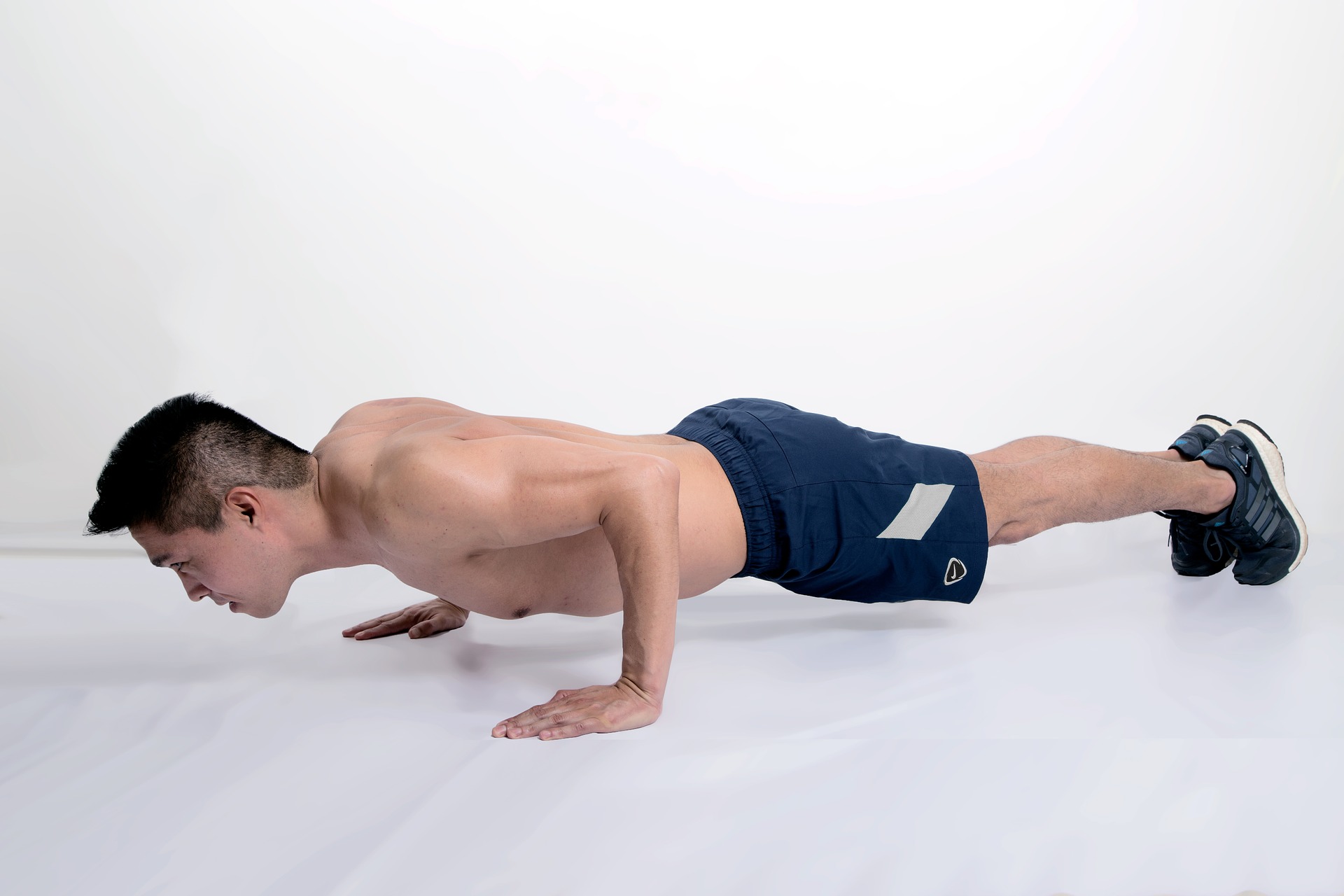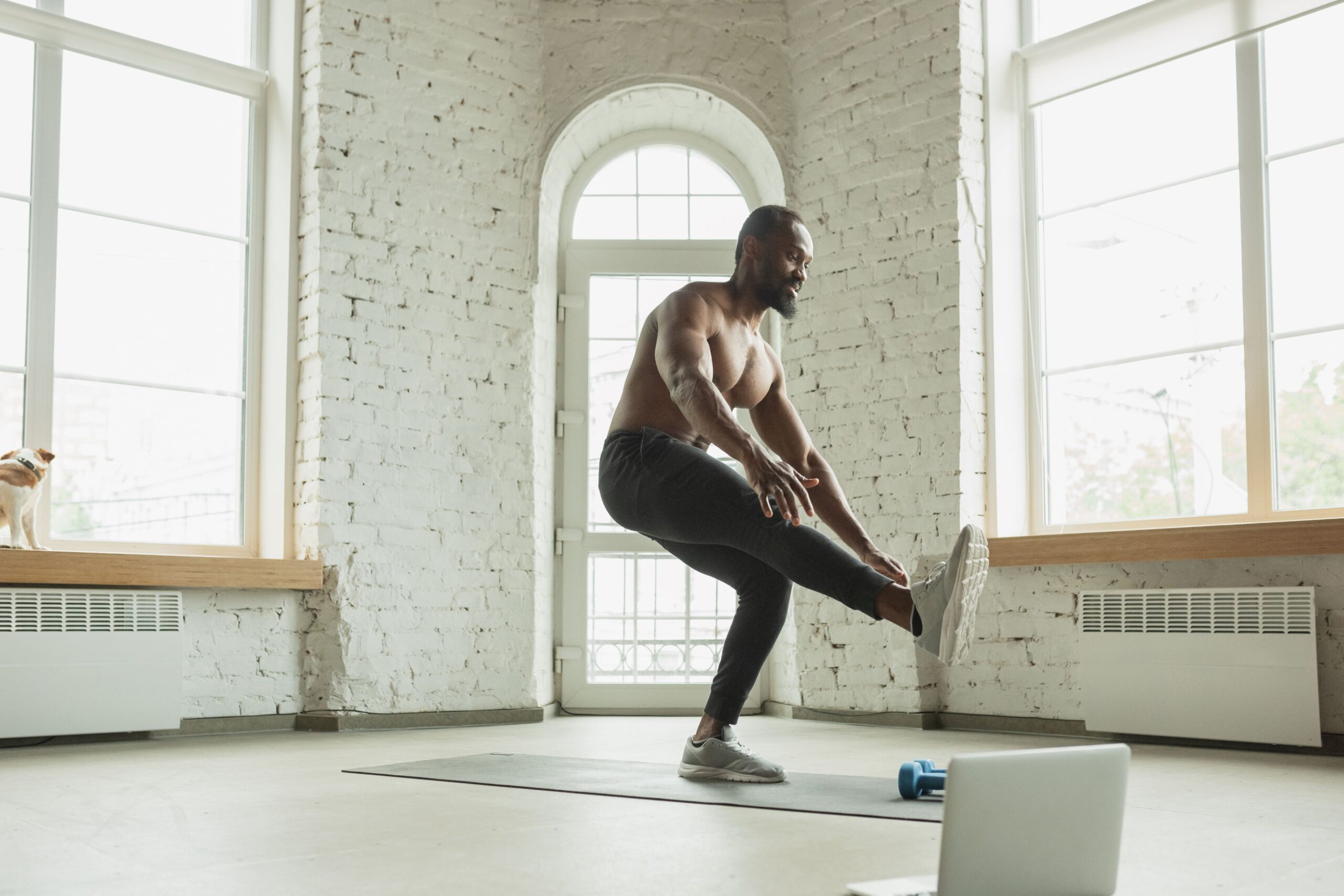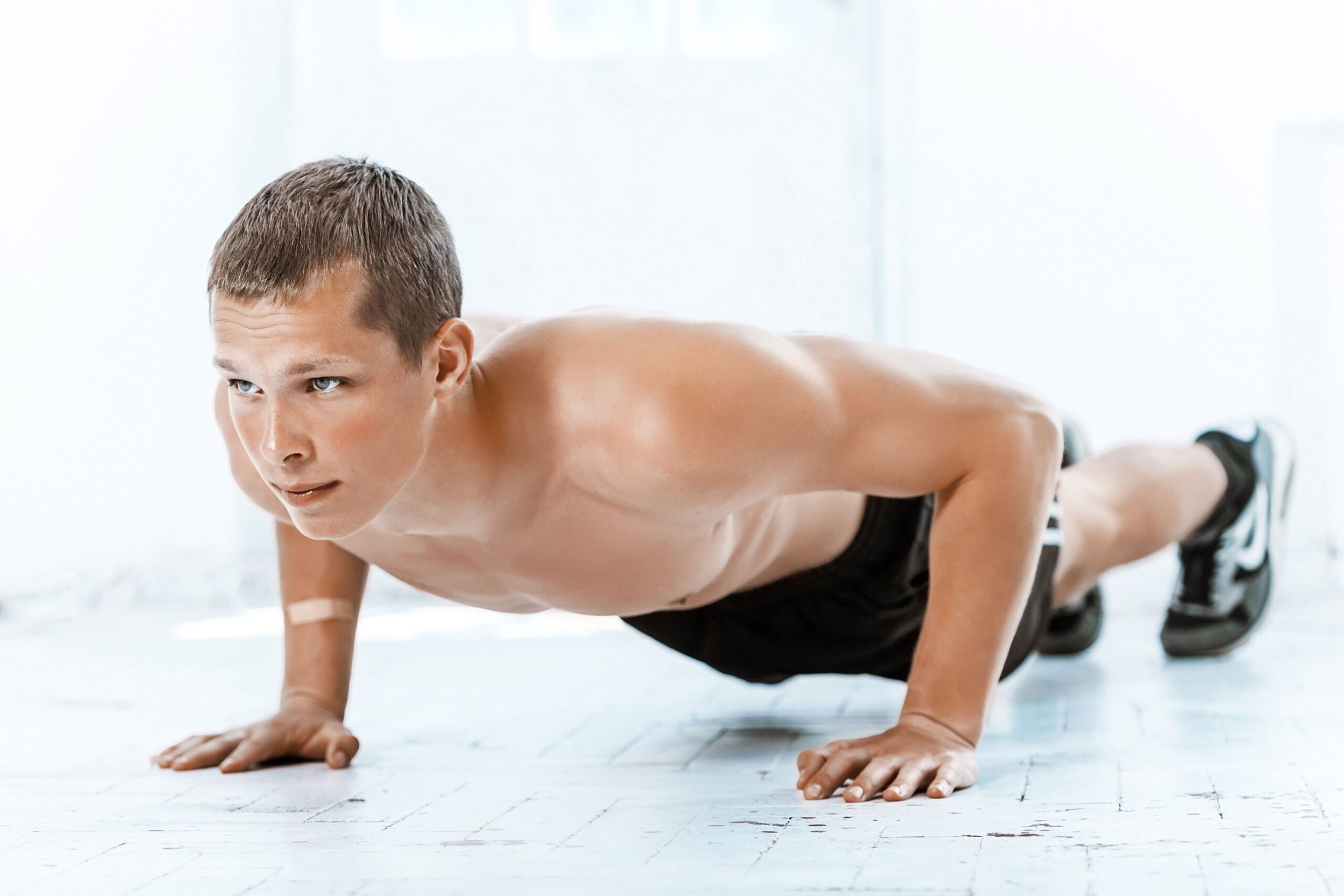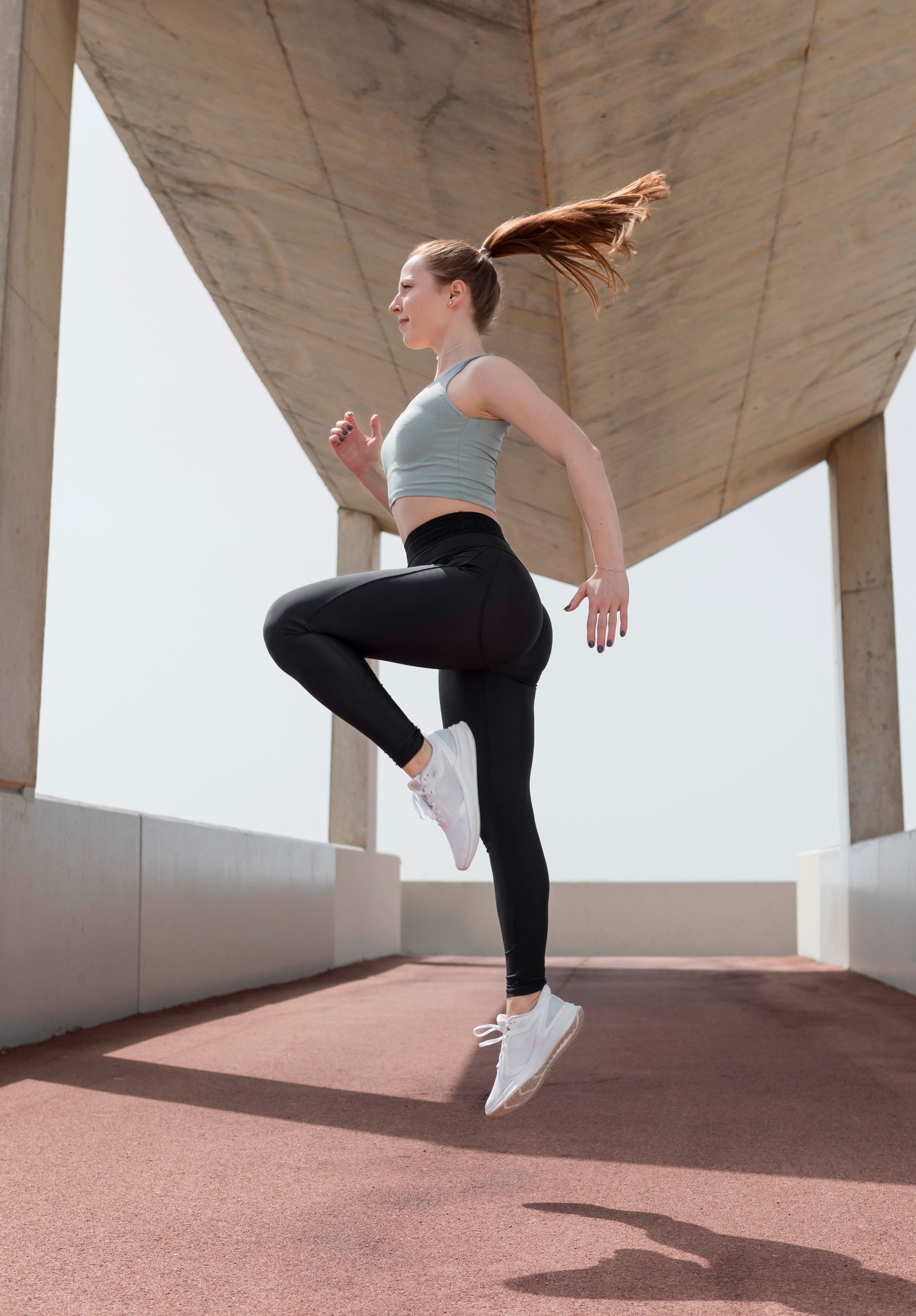On the Road to Hypertrophy
Whether we like it or not, we spend more unconstructive time at home than we care to accept. Furthermore, home can sometimes feel limiting regarding fitness capability, but it doesn’t have to be that way. Many people have found creative ways to work, entertain themselves, forge new careers, and exercise. Go to any store that sells health and fitness home equipment, and you may notice near-empty shelves and short supplies. People have realized that gyms are not the only pathway to staying in shape. Home is also a great place to have effective workouts.
But what if you don’t have any workout equipment at home? What if you are a beginner and need help figuring out where to start? Can you still begin an exercise routine of your own? The answer to all three questions is yes, yes, and yes! Today, we will share six basic workouts you can do at home without equipment. Using The National Academy of Sports Medicine’s Optimum Performance Training Model as our guide, we will incorporate stabilization, endurance, strength, and power movements to have a well-balanced workout plan.
The suggested exercises for this week are:

1. Planks
3 Sets 20-30 Seconds each

2. Single-Leg Balance
3 Sets 10-15 Reps each

3. Squats to Heel Raise
3 Sets 15-20 Reps each

4. Push-ups
3 Sets 20-25 Reps each

5. Jump Squats
3 Sets 10-15 Reps each

6. High-knee Running in Place
3 Sets 30 seconds to 1 minute each set
What is a plank? A plank is an isometric strengthening exercise for the core muscles. It is the starting position of a push-up. Over 20 different plank variations exist, each with varying levels of difficulty.
Why are planks necessary? The core consists of all the muscles attached to the pelvis and spine. Your torso, hip, and shoulders are part of the core muscles complex and move in three planes of motion: transverse, sagittal, and frontal. Some have described the core as a bridge between your hips and shoulders. Planks help stabilize the spine, lower shoulder, and deep torso muscles, giving us more strength, power, good posture, and all three planes of motion.
What is the purpose of doing single-leg (unilateral) balance exercises?
Single-leg balance and stability exercises are great ways to uncover and correct muscle imbalances and overcompensation that may lead to discomfort or injury. Like single-leg balance and stability exercises, most unilateral techniques have proven more effective than bilateral movements because each limb works independently. As a result, there is no overcompensation.
What are the benefits of Squats?
There are many squat exercise levels, from absolute beginner to advanced. However, they all have the primary muscles they target in common. When appropriately performed, squats target the core, butt muscles (gluteus maximus, minimus, and medius), front thighs (quadriceps), back thighs (hamstrings), hip flexors, adductors (groin muscles), and calves.
Squats are great for shaping the lower body, reducing overall fat deposits, improving posture, reducing injury caused by weak ligaments, and seldom used muscle tissue. Squats also improve blood flow in the lower extremities.
Why do I need to do heel raises?
The heel raises, stretches, and strengthens your feet, ankles, calves, and knees. Muscular and flexible calves help prevent injuries to the ankle, Achilles heel, plantar fascia, and anterior tibialis (the shins).
Push-ups are not only for the chest and arms.
For many people, when thinking of a routine exercise, the first two that come to mind are jumping jacks and push-ups. Both activities are worthy of recognition. In this section, we will discuss the benefits of push-ups. Push-ups target your core, triceps, forearms, chest, shoulders, back, and legs. The best part of push-ups is that you can do them almost anywhere. Over 15 push-up variations target different muscle groups and provide different difficulty levels.
Because the plank is the starting position for the push-up, the better you become at doing planks, the better you will perform push-ups and vice versa. Like with all other exercises, proper form is essential when performing push-ups. It is also critical to stay methodical and under control. Remember that executing excellent form is vital rather than having useless reps. Exercise routines should include stabilization, endurance, strength, and power.
Stabilization and Endurance
Develop stabilization and endurance of the core and the muscles surrounding the spine:
Planks: There are many different planks, and the forearm plank is considered the most regressed style. It is ideal for those with weak core muscles and spinal injuries. (Again, consult your medical professional before starting any exercise program.)
Instructions: Lay down, place both elbows on the floor in a parallel position, and get on your toes. Make sure that your shoulders are directly over your elbows. Your body should be straight from your elbows to your toes. Draw in your belly button to engage your deep core muscles and breathe naturally. Hold the position for 30 seconds. Rest for 10 seconds and repeat for a total of 3 sets.
Single-Leg Balance: Stand on one leg with a slight knee bend. The surface should be flat and stable. Imagine a straight line that runs from your ear down past your shoulders to your hips. If you have trouble balancing, consider using a chair, table, or broom handle for support. Draw in your belly button to engage your core muscles. Breathe naturally. Hold the position for 30 seconds. Rest for 5-10 seconds and repeat for 3 sets on each leg.
Squats to Heel Raise – no weights:
Place your feet slightly wider than your shoulders and turn your feet slightly outward but not too much. Before lowering your body, consider pushing your hips backward and entering your squat. With your hips moved back, your knees should not be hovering forward of your toes. Instead, set up behind your toes. Keep your back in a naturally straight position. Your butt should not be creating an arch in your back. In other words, do not hyperextend your back.
Fully squat down as low as your comfortable range of motion will allow. Raise your body onto your toes and lower back into the squat. Use a chair, table, or broom handle for additional balance support. Perform 3 sets of 15 repetitions.
Push-ups: Place both hands on the floor, lower your chest, elbows by your side, and knees on the floor. Cross your feet and elevate. Lower your body to the bottom and rise back to the starting position. In a full plank position, hands are on the base, shoulder width apart, and the middle finger is pointed straight ahead. Keep the body in a straight line from head to heels, lower the body close to the floor, and rise back to the starting position. Perform 3 sets of 15 repetitions.
Jump Squats progression -no weights:
Standard – Keep feet at shoulder-width apart, keep knees from angling out or buckling in, squat down with hips and butt still back, and keep the chest high and above your hips. Squat down, then jump up, between 3-6 inches off the floor. Landing softly onto your toes, balls of your feet, and not heavy on your heels. Perform 3 sets of 15 repetitions.
High Knees Running in Place alternatives:
Modified High Knee: Extend arms above head, bend one leg’s knee, raise the foot off the floor, and meet hands to the knee. Then, do the same with the opposite leg. Perform 3 sets.
Standard Jog-in-place: while raising the knees to the hip leg. Run for 20 seconds and rest for 10 seconds. Seconds. Perform 3 sets.
Conclusion
An effective fitness routine can easily fit into anyone’s schedule. You don’t need any equipment. You just put aside 20-30 minutes two to three times per week. Commit and challenge yourself each time. If you reach a plateau, increase your intensity by adding more repetitions or sets. You can also add power by isometrically holding or slowing down your reps.
Before starting any new health and fitness program or taking supplements, it’s crucial to consult with your healthcare professional. They can provide personalized advice based on your medical history and current health status, ensuring your new regimen is safe and effective. This step helps prevent potential health risks and ensures that any changes you make are beneficial and sustainable in the long run. Your healthcare professional is your best resource for making informed decisions about your health and wellness journey.



